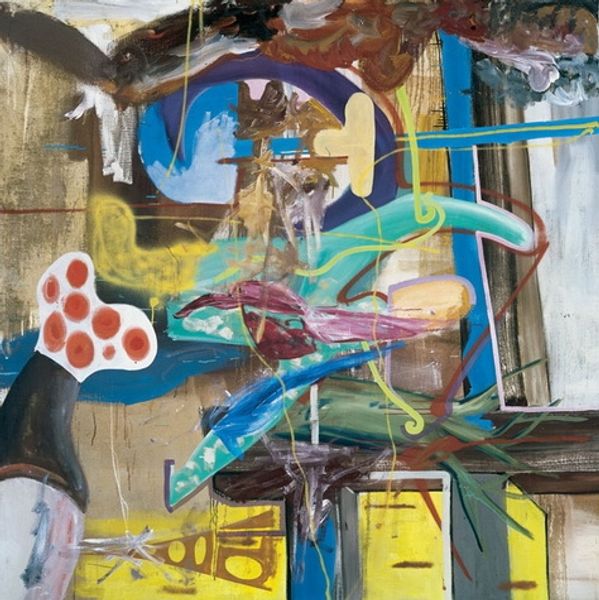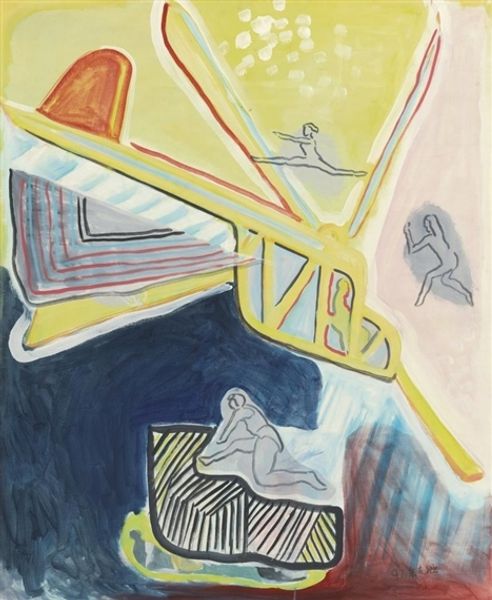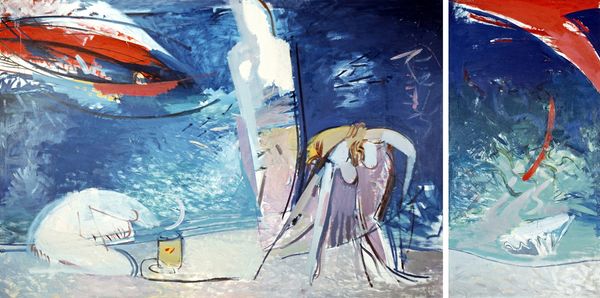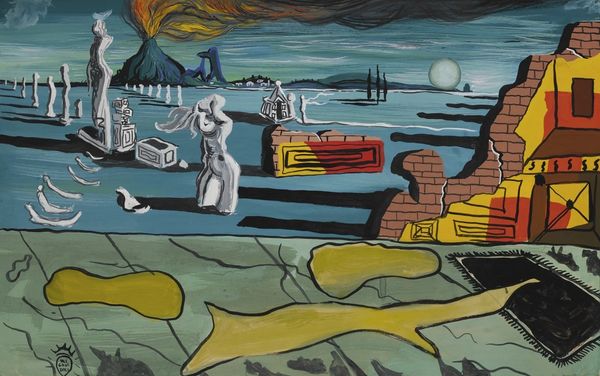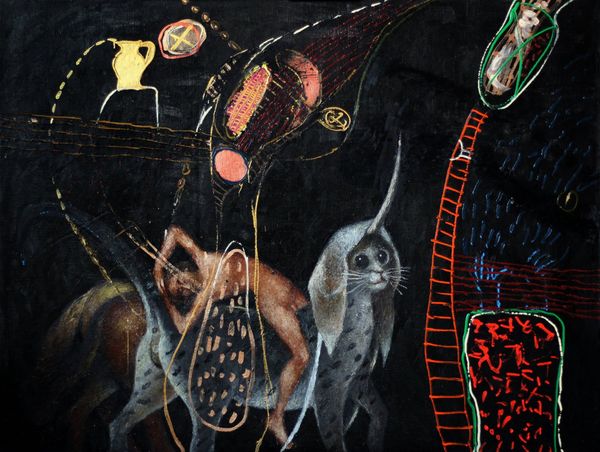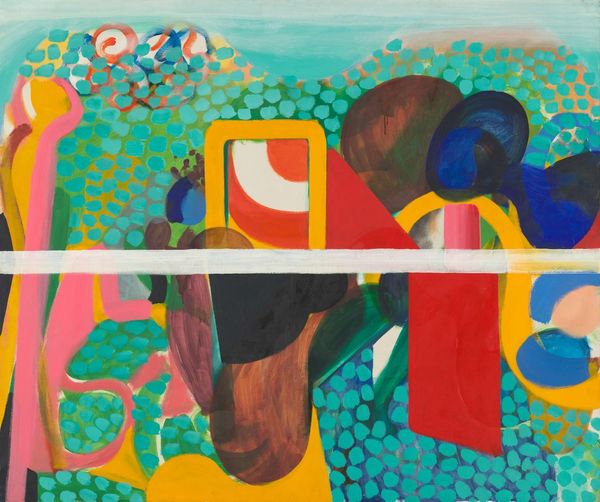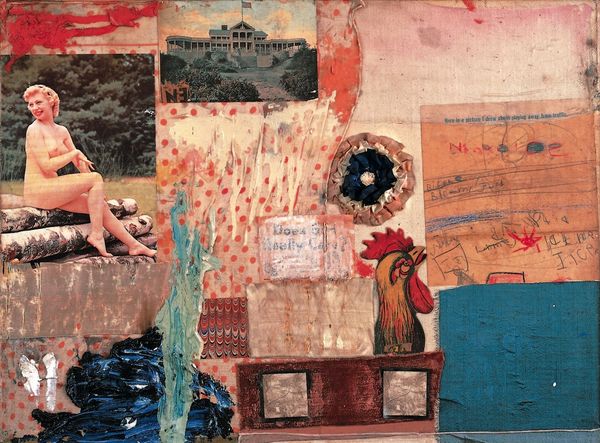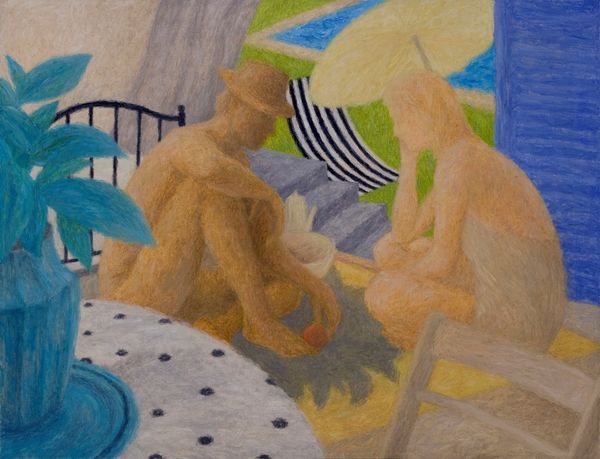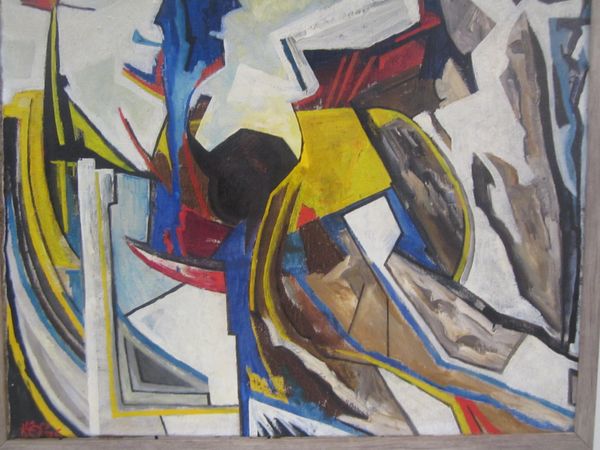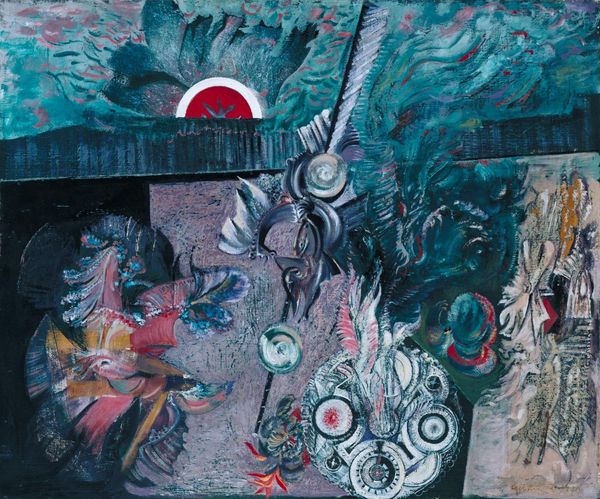
oil-paint
#
portrait
#
oil-paint
#
figuration
#
oil painting
#
surrealism
#
modernism
Copyright: Public domain
Editor: Jindrich Styrsky’s 1933 oil painting "From My Diary" certainly has a surreal quality. The composition, with its floating masks and draped figure, feels very dreamlike. What jumps out to you about it? Curator: It’s crucial to look at this painting through a materialist lens. How was this work made? What were the conditions of its production? The oil paint itself, the canvas – these were commodities, made available by certain economic structures. We need to consider how Styrsky, working in 1933, accessed these materials during a period of global economic depression. Editor: So, the materials themselves are telling a story. How does that connect with the surreal imagery? Curator: The seemingly random juxtaposition of objects – the draped figure, the floating masks, even the textured ground – become a reflection of the fragmentation of labor and social life under capitalism. Styrsky isn't just painting a dream; he's representing a world where things are alienated from their original context and purpose, commodities floating in the market. Look at how the objects contrast: mass produced drape versus carefully painted flat shapes that indicate skill and therefore class? Editor: That's fascinating. I hadn't thought about it in terms of material production shaping the art itself. Curator: Exactly! It's easy to get lost in the symbolism, but grounding it in the material conditions gives us a much more critical understanding. Think about who gets to make art, who can afford it, and what systems enable it. That is part of its history and legacy, don’t you agree? Editor: Absolutely. I'll definitely look at art with that perspective now. Thank you! Curator: My pleasure! It’s about unearthing the hidden narratives embedded within the very fabric of the artwork.
Comments
No comments
Be the first to comment and join the conversation on the ultimate creative platform.
